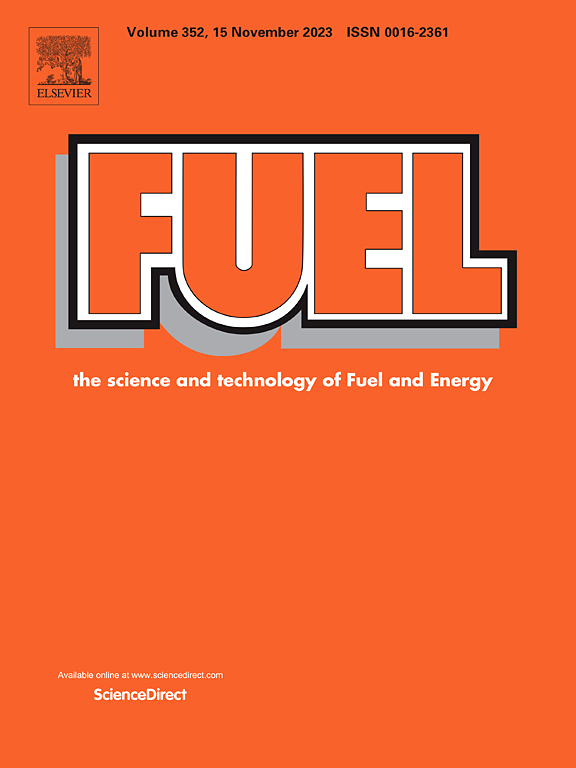Constructing highly-dispersed Cu active sites at ZnFe-LDHs nanosheets for efficient hydrogenation of furfural
IF 6.7
1区 工程技术
Q2 ENERGY & FUELS
引用次数: 0
Abstract
Optimizing the geometry and local electronic density of the Cu active sites with high surface energy is the key to improving the catalytic furfural (FF) selective hydrogenation activity. In this paper, a ZnFe-LDHs supported low-loading (4.53 %) Cu-based catalyst (S-Cu/ZnFe) was synthesized via laminate-metal replacement strategy. The catalytic experimental results showed that the S-Cu/ZnFe exhibited excellent activity and selectivity for hydrogenating FF to furfuryl alcohol (FOL). A ∼100 % conversion of FF and >97 % of FOL yield could be achieved in only 20 min at 170 °C, and the TOF could reach 127.23 h−1, which was much higher than most of the reported Cu-based catalysts. The characterization results showed that compared with the surface-loaded catalyst (L-Cu/ZnFe), the interwoven lamellar structure of Zn/Fe-O octahedra in S-Cu/ZnFe not only dispersed and stabilized the Cu nanosites, but also achieved the local valence electron transfer through Fe-O-Cu bonds (i.e., metal–oxygen bridges) and thus promoting the accumulation of highly-reactive Cu+ sites. In addition, the presence of oxygen vacancies with positively-charged facilitated both the *H hopping and the FF selectively-adsorbing on S-Cu/ZnFe surface. In conclusion, the laminate-metal replacement strategy proposed in this paper enables the simple preparation of low-loading and highly-dispersed Cu-based catalysts, which provides a catalyst design basis for efficient hydrogenation of FF and similar carbonyl compounds.

求助全文
约1分钟内获得全文
求助全文
来源期刊

Fuel
工程技术-工程:化工
CiteScore
12.80
自引率
20.30%
发文量
3506
审稿时长
64 days
期刊介绍:
The exploration of energy sources remains a critical matter of study. For the past nine decades, fuel has consistently held the forefront in primary research efforts within the field of energy science. This area of investigation encompasses a wide range of subjects, with a particular emphasis on emerging concerns like environmental factors and pollution.
 求助内容:
求助内容: 应助结果提醒方式:
应助结果提醒方式:


